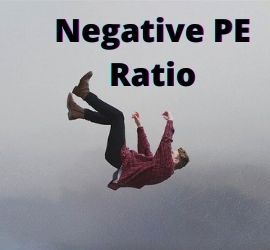What is the Rule of 70?

The rule of 70 is a simple method used to estimate how long it will take a person’s money or investment to double depending on the rate of return. This method is widely used for comparing investments with different compounded annual interest rates. While not precisely accurate, it still makes determining how long investment might take to double a simple matter. Financial investors sometimes refer to the rule of 70 as doubling time. For example, consider an investor who invests $100,000 at a compound annual interest rate of 10%. He might want a quick estimate for how long it will take his investment to double, or grow to $200,000. If he simply applies the rule of 70, he will see that it will take approximately seven (70/10) years for his investment to double to $200,000.
The Rule of 70 – What Does it Tell an Investor?
The rule of 70 assists investors in determining the current and future value of their investment. While this is an approximate estimate, the rule has the potential to be effective and accurate. It’s easier to use than exact mathematical formulas. Particularly when looking for a quick rule of thumb as to when an investment might double in size. Investors can readily utilize such a simple metric to compare various investments. These can include anything from a person’s retirement portfolio’s growth rate or mutual fund returns.
For example, say a quick calculation produced the conclusion it takes 15 years before a portfolio doubles in size. Instead, the investor prefers a result of around ten years. Therefore, he might make appropriate portfolio allocation changes to boost the investment’s growth rate. The rule is acknowledged as an accurate method for dealing with diverse exponential growth concepts. It provides quick, accurate estimates without the need for complex mathematical techniques. Typically, it is widely used in the financial sector to analyze an investment and its relative potential growth rate.
How to Calculate Doubling Time Using the Rule of 70
Doubling Time = 70 / % Growth Rate
Calculating the rule of 70 is a straightforward two-step process
- Determine the annual rate of return – First, calculate the investment’s yearly rate of return. This number will act as the divisor for the rule of 70 formula. For example, 70 is divided by 5 if a retirement portfolio saves money at a rate of 5% per year. If the growth rate is expressed as a decimal, multiply it by 100 to get the percentage.
- Divide it by 70. In the rule of 70, the “70” represents the numerator or the divisible number in the formula. Divide the number 70 by the growth rate to determine the amount of time it will take for an investment to double. For example, if a mutual fund has a three percent growth rate, divide 70 by three. Thus, the doubling time is 23.33 years (70 / 3 = 23.33).
Limitations for the Rule of 70
Not all investments will double in the time frame indicated by this simple math calculation. However, the rule of 70 is still quite useful. Particularly if you want a ballpark estimate for how long it will take an initial investment to double in value. It’s very handy when comparing different assets and offers relevant insight. The rule of 70 works pretty well in most cases. However, the response returned is not exactly correct for a variety of reasons.
Limitations
- Bigger rates yield bigger discrepancies – The difference isn’t noticeable with a small annual growth rate. But, it becomes apparent when dealing with higher rates, such as 10 percent or more. This is significant if the investor is estimating investment growth, such as mutual funds or stocks.
- Changing account balances – Most accounts are not static. Dynamic fluctuations can change the results. Especially, if there are large withdrawals or deposits within the doubling period.
- Constant growth rate – The rule of 70 assumes a constant growth rate for the investment’s lifespan. Most savings accounts don’t change the interest rate very often. But, over the course of a decade or more, it can happen. Year after year, an investment or stock portfolio can have a different annual rate of growth and return. Estimates of the growth rates or rates of return on investments are often needed. Therefore, inaccurate results are possible and it’s nearly impossible to predict. As a result, it’s best to recalculate regularly as the annual rate of return changes.
- Continuous compounding – The rule of 70 assumes that the growth rate uses compound interest. However, there are wide variations between something compounded continuously as opposed to monthly. Continuous compounding means the interest is constantly calculated and then added to the account. Most savings accounts compound interest monthly instead of constantly. Even a regular CD is only compounded once a month, so it’s not truly continuous. Therefore, the rule can slightly underestimate or overestimate how many years it takes for an investment to double.
The Rule of 70 Example
When comparing assets with differing annual interest rates, the rule of 70 is widely utilized. Its simplicity makes it straightforward for investors to calculate – even without paper. Therefore, comparisons can be apples-to-apples when evaluating comparable returns on their investments. Assume an investor decides to analyze the rates of return on the investments in a retirement portfolio. The investor would simply divide 70 by the annual rate of return to determine the doubling time. Here’s an illustration:
- 3% growth rate – it would take 23.3 years for a portfolio to double (70/3 = 23.33)
- 8% growth rate – it would take 8.75 years to double (70/8 = 8.75)
- 12% growth rate – it would take 5.8 years to double (70/12 = 5.83)
The Rule of 72 or 69
Sometimes, investors prefer to use the rule of 69 and the rule of 72. The function is similar for these as with the rule of 70. However, it uses 69 or 72 in place of 70 for the calculations. Using a rule of 69 or 72 both provide rough estimates of the number of years for investments to double.
- The rule of 69 is slightly more accurate when continuous compounding is used regarding the growth rate.
- A rule of 72 might be slightly more accurate for compounding intervals that happen less frequently. For example, a savings account or certificate of deposit that compounds monthly, not continuously.
To use the rule of 72, divide the number 72 by the annual rate of return. Using the rule of 69, simply divide the number 69 by the annual rate of return. For example, consider an investor who invests $100,000 at a 10% fixed annual interest rate compounded continuously. He wants to estimate the number of years it would take for his investment to double. However, the rule of 69 is slightly more accurate when the interest rate compounds continuously. Therefore, the investor divides 69 by the interest rate of 10%. Instead of using the rule of 70, he uses the rule of 69. With continuously compounding interest, it takes approximately 6.9 years (69/10) years for the investment to double.
If the investor had used the rule of 70, the result would have been 7 years exactly to double (70 / 10 = 7 years). Either way, it gives an accurate estimate for a calculation most investors can do in their heads.
Up Next: What Is an Iron Condor Options Strategy?
 An iron condor is the combination of a bullish and bearish vertical spread on the same underlying asset. It is made up of two call options (one long and one short) and two put options (one long and one short). Each of the options has a different strike price but the same expiration date. The strategy can be built as a long Iron Condor, where the trade generates a net debit. However, it is more commonly used as a short Iron Condor, where the transaction generates a net credit. A net credit indicates that the four options contracts brought in more money than the investor had to payout.
An iron condor is the combination of a bullish and bearish vertical spread on the same underlying asset. It is made up of two call options (one long and one short) and two put options (one long and one short). Each of the options has a different strike price but the same expiration date. The strategy can be built as a long Iron Condor, where the trade generates a net debit. However, it is more commonly used as a short Iron Condor, where the transaction generates a net credit. A net credit indicates that the four options contracts brought in more money than the investor had to payout.
As an options trading strategy, a short iron condor gets the most profit when the underlying stock closes at expiry between the middle strike prices and all four options expire worthlessly. In other words, the idea is to profit from the underlying asset’s low volatility and pocket the premiums as profit. The iron condor has a similar reward as a standard condor spread. However, instead of only calls or only puts, it uses both calls and puts. The condor and the iron condor are both extensions of the butterfly spread and the iron butterfly.




